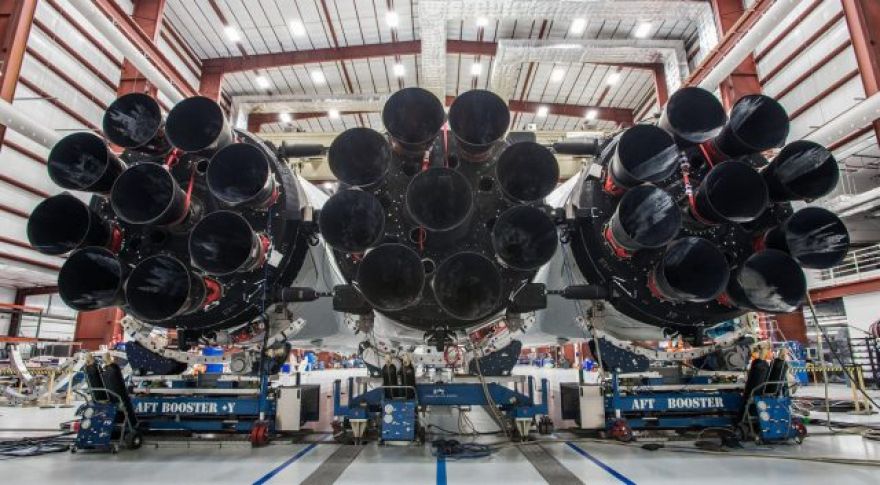
Elon Musk Explains Why SpaceX Prefers Smaller Rocket Engines
The is a huge moment for the company and human space exploration as a whole. For the first time, we have a mostly reusable rocket with enough power to deliver large payloads to other planets. One peculiarity of the Falcon Heavy is its complement of 27 engines, which seems like it would be unnecessarily complicated. However, CEO Elon Musk says .
The Falcon Heavy has the most engines of any rocket ever to reach orbit — it’s not even close. The highly reliable Russian Soyuz has five engines, as did the American Saturn V vehicle (in the first stage).
Musk says that past issues with high numbers of engines were due to slower, less powerful avionics. With modern technology, it’s possible to control all 27 Merlin engines on the Falcon Heavy, which is basically three Falcon 9 rockets strapped together. The rocket can vary thrust in real time to keep the vehicle on course, even if there’s variance among the individual engines.
He describes the advantage to this design in computer terms. In the past, mainframe systems would serve many clients, but everyone was out of luck if that single mainframe went down. Today, the services we use online are powered by many smaller computers, so a given service remains operational even if some individual computers fail. It’s the same with the Falcon Heavy. The rocket can compensate for a few engine failures — it can even reach orbit with as many as six dead engines.
plans to continue using large numbers of small engines in its rockets. The company’s next generation Big Falcon Rocket (BFR) will sport 31 engines. These will be more powerful “Raptor” engines that run on liquid oxygen and methane. Each engine will have 380,000 pounds of thrust at sea level, compared with just 190,000 pounds with the Merlin. This vehicle could begin replacing the Falcon 9 in the early 2020s. SpaceX hopes to make this rocket its base for all missions from low-Earth orbit satellite deployments to interplanetary transport. And if a few engines don’t work, it’s no big deal. You’ll still make it to Mars.